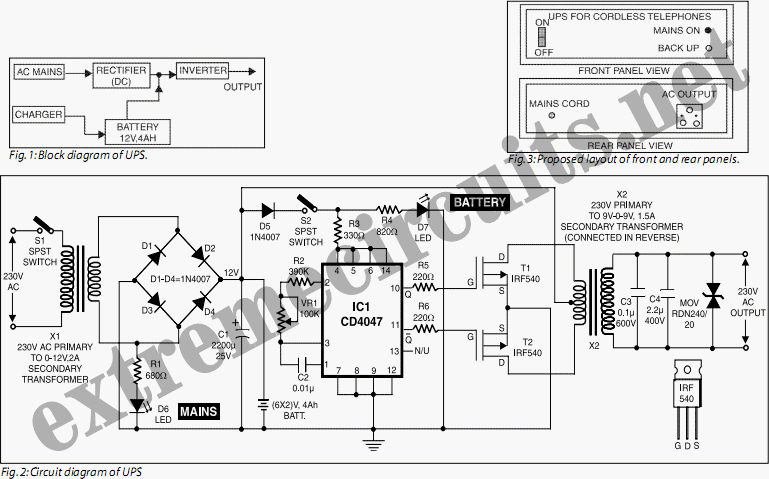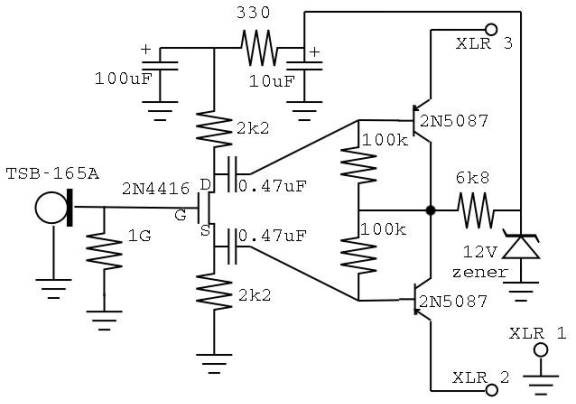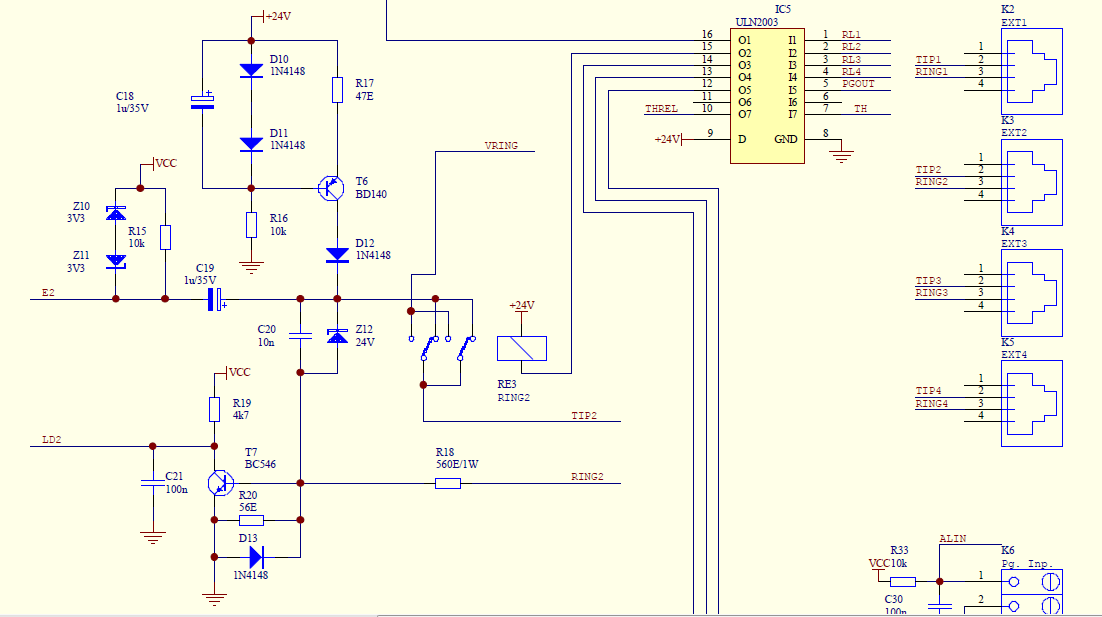
Phones

Working on Strowger phone exchanges involves a significant amount of soldering. However, unlike modern electronics, it is not possible to use a temperature-controlled soldering station with a built-in solder stand when working up a ladder. Typically, only a 50V supply is available, and there is no convenient place to set the base unit midway up a rack. Therefore, the soldering irons used are not temperature-controlled, operate on 50V, have electrically isolated tips to prevent accidental grounding when working on live circuits, and the soldering iron stands are attached to spring clamps for easy mobility around the frame. The soldering iron shown in the picture is somewhat worn, and there is a noticeable split in the insulation that requires attention. A useful tip provided by a phone engineer is to wrap a bit of solder around the cable of the iron; this prevents the frustration of realizing that the solder is in a toolbox or, worse, at home when working at height. Having emergency solder within reach of the iron tip can alleviate a lot of stress. To celebrate the successful connection of multiple tie lines, a video was made demonstrating dialing from one side of the living room to the other via an Asterisk server at the Dean Forest Railway. The dialing sequence involves connecting through various tie lines and accessing the Asterisk server to eventually ring a black phone. After experiencing a hardware failure with the Asterisk server, it was rebuilt using a Neoware CA10 thin client, significantly reducing power consumption from 60W to about 14W. A Chinaroby TDM400P was utilized, which conveniently powers the FXS ports without requiring an external Molex connector. Additionally, build notes were updated for installing Debian and Asterisk/Dahdi from repositories, ensuring automatic security updates and basic OS hardening. Ongoing improvements to the dial plan and the development of a Dial-a-Disc macro are also in progress. A previous issue with FS4 not clearing properly was documented, and a screw terminal DP was replaced with a Krone box for practicality. This modification included installing a panel with six RJ45 sockets, each carrying four extensions, allowing for the use of Cat-5 cabling throughout the house with adaptors for phone sockets. The entire PAX system is now self-contained and not permanently wired into the house, facilitating easier relocation in the future.
The Strowger phone exchange system operates on a relay-based mechanism, where the dialing process involves a series of mechanical switches and connections that establish a path for the telephone call. In this setup, each Strowger switch is designed to handle a specific number of lines and can connect to other switches or directly to subscriber lines. The use of a 50V supply is standard in such systems, which is adequate for the operation of the relays without risking damage to the components.
The soldering iron used in this context must be robust, with features that ensure safety and efficiency. The electrically isolated tips prevent unintended grounding, which is critical when working with live circuits to avoid short circuits or damage to the equipment. The design of the soldering iron stands, which are attached to spring clamps, allows for flexibility and ease of use in tight spaces or elevated positions.
The Asterisk server plays a pivotal role in modernizing the Strowger exchange system, enabling VoIP functionality and integration with contemporary telecommunications infrastructure. The transition to a Neoware CA10 thin client not only enhances energy efficiency but also provides a compact solution for running the Asterisk software. The TDM400P interface card further simplifies the connection of analog telephony devices, reducing the need for additional power supplies and streamlining the setup.
The use of RJ45 sockets and Cat-5 cabling allows for a more versatile and modern approach to wiring the PAX system. This adaptation facilitates easier maintenance and upgrades while ensuring compatibility with current networking standards. The self-contained nature of the system enhances portability, allowing for easy relocation without extensive rewiring.
In conclusion, the integration of traditional Strowger technology with modern electronics and networking principles exemplifies a practical approach to maintaining legacy systems while improving functionality and efficiency. The ongoing refinements in software and hardware demonstrate a commitment to enhancing the user experience and ensuring the longevity of the system.Working on strowger phone exchanges involves a lot of soldering, but unlike modern electronics, you can`t use a fancy temperature controlled soldering station, with built in solder stand etc when you`re up a ladder. For one thing, you`ve usually only got a 50V supply available and for another, there`s no where to put the base unit half way up a rack.
So the irons we use aren`t temperature controlled, run off 50V, have electrically isolated tips (so you don`t accidentally earth things when you`re working on live circuits) and the soldering iron stands are connected to spring clamps so can easily be moved around the frame. The iron in the picture is showing its age somewhat (and having looked at the picture carefully, I notice there`s a split in the insulation that needs taking care of) but it does illustrate a tip I was recently given by a phone engineer.
Always wrap a bit of solder around the cable of your iron, there`s nothing more frustrating than being up a ladder and realising your solder is in your toolbox or worse, on the bench at home. Having some emergency solder available within inches of the tip of your iron can save a lot of frustration.
To celebrate that I`ve got enough tie lines working to phone from one side of the living room to the other, via the asterisk server at the Dean Forest Railway. I made a video of me dialling 30-0-50-91-491. Dialing 30 takes you out through an outgoing tie line and onto the junction selector, 0 takes you back into the 50/7A on an incoming tie line, 50 takes you out through another tieline and into my asterisk server.
91 are the access digits which take you in to the asterisk server at the Dean Forest Railway, 491 then takes you back into my asterisk server, which then dials 39 ³ on your behalf which takes you out *another* tie line into my 10/2A PAX and then it finally dials a 5 to ring the black phone (also a 706) Two 1950s strowger PAXes, a home-brew junction selector, two asterisk servers and a load of internet later and I`ve phoned from one side of my front room to the other. My asterisk server blew up its HD controller, so I`ve completely rebuilt it, this time using a Neoware CA10 thin client (my power consumption has dropped from 60W to about 14W win!) and a cheap and cheerful Chinaroby TDM400P which unlike most TDM400 clones can power the FXS ports without an external molex connector which is handy because the CA10 doesn`t have any molex connectors inside!
In the process of doing this, I updated my build notes for the easiest way to go from bare metal -> debian -> asterisk/dahdi installed and working from packages in the repos (so you automatically get security updates!), with some basic OS hardening in the mix as well. It doesn`t take much doing, is so much easier than building from source, and is more secure in the long term.
At some point I`ll finish the rant I`ve got brewing about why doing it any other way is madness! I`ve also done a lot of work on the dialplan, built a prototype of a Dial-a-Disc macro although I`m not happy with it as it`s only got the long form of the announcement. I`m working on a better replica. Back in March I had problems with FS4 not clearing down properly so I busied it out. Until I found that entry in the exchane diary I`d forgotten about that fault. I must fix it! I ripped out the screw terminal DP I had in the bottom of the pax, and replaced it with a krone box. OK, I know it`s not heritage but it is much more practical. Fitted a small panel of 6xRJ45 sockets, these are also terminated on the krone blocks, and are jumpered so that each RJ45 carries 4 extensions.
21-24, 25-28, 41-44, 45-48, 61-64, 65-68. This way I can run cat-5 around the house and use adaptors to break it out to phone sockets. The whole PAX is then self contained and not wired into my house. Which will make moving it easier in the future. I wired my homebrew junction selector back in. Again this is terminated 🔗 External reference
The Strowger phone exchange system operates on a relay-based mechanism, where the dialing process involves a series of mechanical switches and connections that establish a path for the telephone call. In this setup, each Strowger switch is designed to handle a specific number of lines and can connect to other switches or directly to subscriber lines. The use of a 50V supply is standard in such systems, which is adequate for the operation of the relays without risking damage to the components.
The soldering iron used in this context must be robust, with features that ensure safety and efficiency. The electrically isolated tips prevent unintended grounding, which is critical when working with live circuits to avoid short circuits or damage to the equipment. The design of the soldering iron stands, which are attached to spring clamps, allows for flexibility and ease of use in tight spaces or elevated positions.
The Asterisk server plays a pivotal role in modernizing the Strowger exchange system, enabling VoIP functionality and integration with contemporary telecommunications infrastructure. The transition to a Neoware CA10 thin client not only enhances energy efficiency but also provides a compact solution for running the Asterisk software. The TDM400P interface card further simplifies the connection of analog telephony devices, reducing the need for additional power supplies and streamlining the setup.
The use of RJ45 sockets and Cat-5 cabling allows for a more versatile and modern approach to wiring the PAX system. This adaptation facilitates easier maintenance and upgrades while ensuring compatibility with current networking standards. The self-contained nature of the system enhances portability, allowing for easy relocation without extensive rewiring.
In conclusion, the integration of traditional Strowger technology with modern electronics and networking principles exemplifies a practical approach to maintaining legacy systems while improving functionality and efficiency. The ongoing refinements in software and hardware demonstrate a commitment to enhancing the user experience and ensuring the longevity of the system.Working on strowger phone exchanges involves a lot of soldering, but unlike modern electronics, you can`t use a fancy temperature controlled soldering station, with built in solder stand etc when you`re up a ladder. For one thing, you`ve usually only got a 50V supply available and for another, there`s no where to put the base unit half way up a rack.
So the irons we use aren`t temperature controlled, run off 50V, have electrically isolated tips (so you don`t accidentally earth things when you`re working on live circuits) and the soldering iron stands are connected to spring clamps so can easily be moved around the frame. The iron in the picture is showing its age somewhat (and having looked at the picture carefully, I notice there`s a split in the insulation that needs taking care of) but it does illustrate a tip I was recently given by a phone engineer.
Always wrap a bit of solder around the cable of your iron, there`s nothing more frustrating than being up a ladder and realising your solder is in your toolbox or worse, on the bench at home. Having some emergency solder available within inches of the tip of your iron can save a lot of frustration.
To celebrate that I`ve got enough tie lines working to phone from one side of the living room to the other, via the asterisk server at the Dean Forest Railway. I made a video of me dialling 30-0-50-91-491. Dialing 30 takes you out through an outgoing tie line and onto the junction selector, 0 takes you back into the 50/7A on an incoming tie line, 50 takes you out through another tieline and into my asterisk server.
91 are the access digits which take you in to the asterisk server at the Dean Forest Railway, 491 then takes you back into my asterisk server, which then dials 39 ³ on your behalf which takes you out *another* tie line into my 10/2A PAX and then it finally dials a 5 to ring the black phone (also a 706) Two 1950s strowger PAXes, a home-brew junction selector, two asterisk servers and a load of internet later and I`ve phoned from one side of my front room to the other. My asterisk server blew up its HD controller, so I`ve completely rebuilt it, this time using a Neoware CA10 thin client (my power consumption has dropped from 60W to about 14W win!) and a cheap and cheerful Chinaroby TDM400P which unlike most TDM400 clones can power the FXS ports without an external molex connector which is handy because the CA10 doesn`t have any molex connectors inside!
In the process of doing this, I updated my build notes for the easiest way to go from bare metal -> debian -> asterisk/dahdi installed and working from packages in the repos (so you automatically get security updates!), with some basic OS hardening in the mix as well. It doesn`t take much doing, is so much easier than building from source, and is more secure in the long term.
At some point I`ll finish the rant I`ve got brewing about why doing it any other way is madness! I`ve also done a lot of work on the dialplan, built a prototype of a Dial-a-Disc macro although I`m not happy with it as it`s only got the long form of the announcement. I`m working on a better replica. Back in March I had problems with FS4 not clearing down properly so I busied it out. Until I found that entry in the exchane diary I`d forgotten about that fault. I must fix it! I ripped out the screw terminal DP I had in the bottom of the pax, and replaced it with a krone box. OK, I know it`s not heritage but it is much more practical. Fitted a small panel of 6xRJ45 sockets, these are also terminated on the krone blocks, and are jumpered so that each RJ45 carries 4 extensions.
21-24, 25-28, 41-44, 45-48, 61-64, 65-68. This way I can run cat-5 around the house and use adaptors to break it out to phone sockets. The whole PAX is then self contained and not wired into my house. Which will make moving it easier in the future. I wired my homebrew junction selector back in. Again this is terminated 🔗 External reference





